Given the name of his new wildlife docuseries, Giants, it was inevitable that openly gay, UK-based host Dan O’Neill would be asked if he’s a size queen. “What do you say in the states?” he smirks via Zoom. “I’m going to plead the fifth! The biggest fifth you’ve ever seen!”
A Curiosity original that recently premiered on its streaming platform Curiosity Stream, Giants’ first five episodes focus on some of the largest creatures to ever roam the earth (living and their extinct ancestors), including great white sharks and long gone megalodons, African elephants and 14-ton straight-tusked palaeoxodons, anacondas and their ancestor Titanoboa, prehistoric cave lions, the extinct 40-foot-long uber-crocodile Sarcosuchus and its still roaming Australian saltwater wetland relatives. In seeking out these giants, O’Neill globetrots from Australia’s South and North coasts to Kenya, Botswana, and Brazil, encountering fellow LGBTQ conservationists and wildlife experts in the process, and spectacular, convincing CGI recreations of extinct giants, making this truly the first show of its kind.
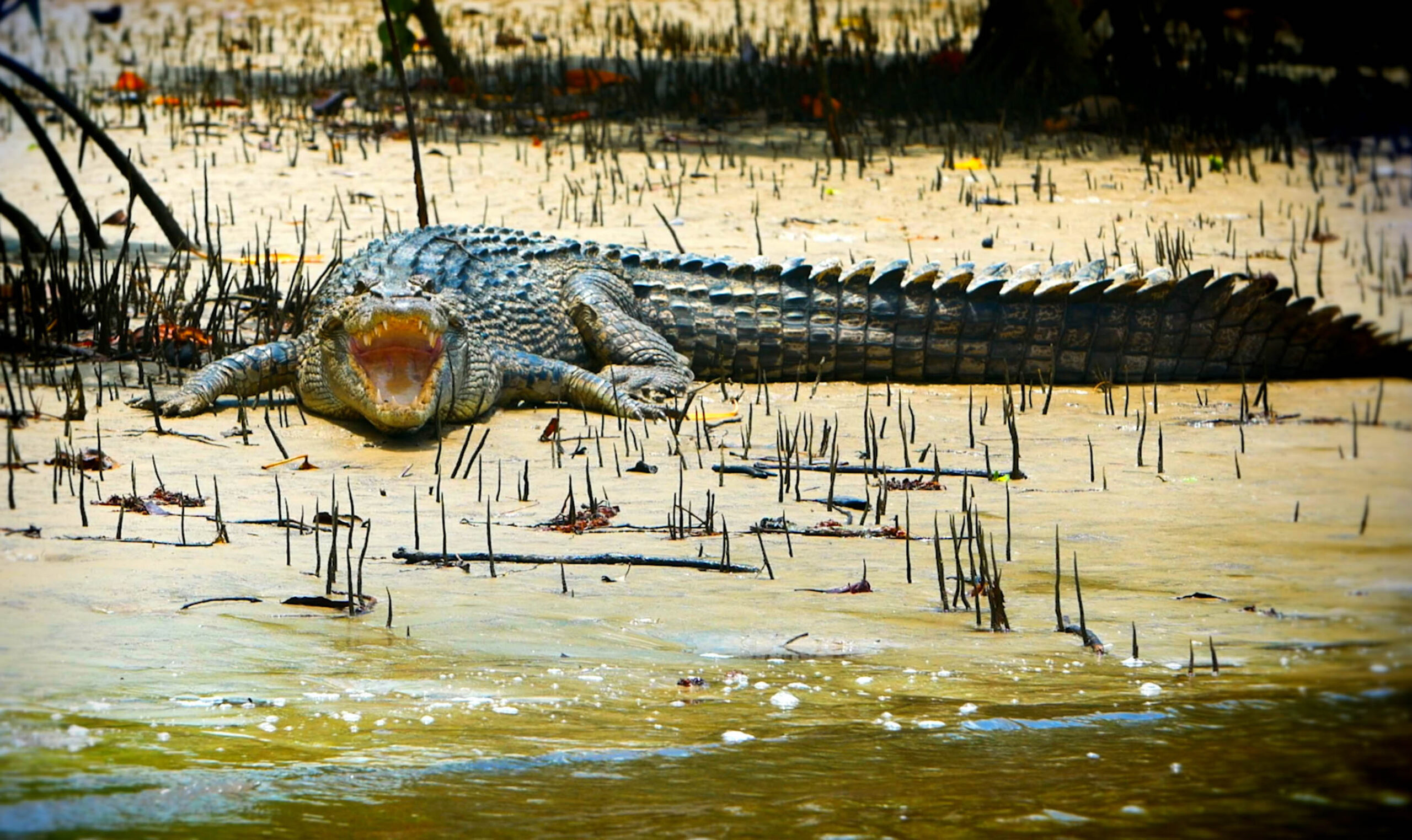
Giant Crocodile (Photo: Curiosity Stream)
Admitting that his parents first responded to his lifelong obsession with adventure, wildlife, and dangerous critters with fear and horror: “My mother hated it, she was like, ‘you’re going to die,’ and now she’s just given up, ‘off you go, see you later.’” The Bristol based O’Neill has spent extensive time in some of the world’s wildest jungles and wetlands, personally conducts expeditions (which can be booked via his website), and has created a growing library of documentaries he often shoots himself, including the BBC Earth docuseries Snow Leopards: Ghosts in the Snow, and a YouTube documentary on endangered raptor the Philippine eagle, Queen of Birds. He also spends time working with many conservation-centric organizations and causes across the globe.
During our interview, O’Neill’s passion and excitement proved contagious, even through a laptop screen. Here he discusses Giants, how travelers can experience wildlife ethically (and places and practices to avoid), and even a creature he loathes (hint: it’s tiny!).
With such a crowded field of shows about animals out there, how did you pitch this as a different approach?
I think what’s really cool about Giants is it’s so exciting, but really educational. We circumnavigate the world looking for some of the most iconic and massive animals alive today, but in that is hidden so much science and knowledge. And what makes it different is it’s a new way of not just talking about natural history science information, but also hidden messages about conservation and climate change, because we’re talking about how these animals went extinct. A large part of the reason they did was changing global climates and the loss of habitat and food changes, which is exactly what’s happening to species today. There used to be 10 million elephants walking across Africa and today there’s a tiny fraction of that.
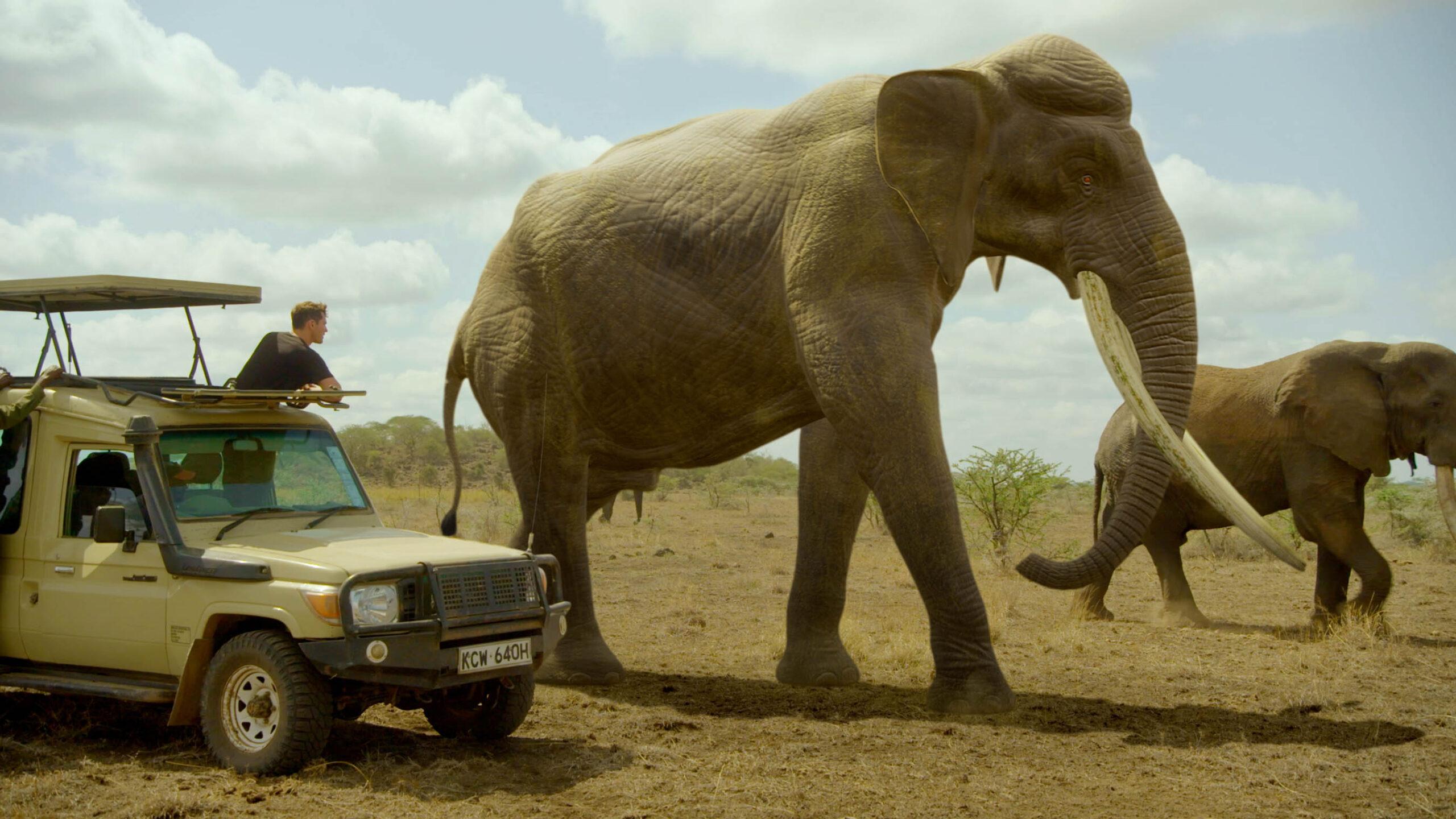

Photo courtesy of Curiosity Stream
How did you come up with the list of animals to feature and do you already have more episode topics ready to go for a second season?
It’s so exciting picking them. The world’s our oyster. Anacondas are a big one for the team because I’ve done so much work in South America and that was our final shoot, in Brazil, and it was great to go back to an animal I’ve seen numerous times but never in the way we did in that show. We also picked them based on locations, because we didn’t want to fly around the world when we can tell stories in similar locations. Its better than getting on airplanes and pumping out those emissions. The Australian shoot was sharks and crocodiles. In Africa we did lions, and off the back of our Australia shoot we went to Brazil and back home. And yes we have a list of other animals for the future. We’ve discussed polar bears, gorillas, and a very, very big spider in the Amazon as big as a dinner plate. And you know sloths? There used to be giant ground sloths that were meters tall. Giant eagles. Huge, great big insects, a centipede that was six feet long in the past.
Are there a lot of LGBTQ people working in conservation and science? If so we haven’t really seen them before in shows like this.
There’s never been an LGBTQ wildlife presenter on a major network doing adventure shows, either. I’m a believer that you can’t be what you can’t see, or it’s incredibly hard, and historically LGBTQ people have felt completely othered by the scientific community. Here in the UK, and I’m sure it’s similar over there and around the world, LGBTQ people are far less likely to continue pursuing science careers after they finish at university compared to their straight counterparts. They feel ostracized and are more likely to hide their identity, their significant others, less likely to come out, and more likely to leave their jobs. I think it’s really important to showcase the work of these incredible scientists. And that’s one of the things I love about Giants. Dr. Julianna Terra from the Anaconda episode talked to me about her life and partner and was incredibly open about it. And Dr. Sebastian Groh from the crocodile episode happens to be a transman and is one of the world’s experts in extinct prehistoric crocodiles. And one of our shark biologists, Dr. Lauren Meyer, she was talking to me about her partner. There’s also an arachnologist named Lauren Esposito who founded 500 Queer Scientists (500queerscientists.com), trying to push LGBTQ scientists in STEM careers.
When producing the show, did you give everyone involved the heads up you were gay? You are assisted at times with some of the more typically straight, macho white “blokes,” and you visit at least one country where homosexuality is illegal.
They all had the heads up, which was a decision by Off the Fence, who produced the series; they’re absolute legends. We had discussions: are we going to hide it and not tell anyone because we’re going to Kenya where its illegal to be gay? We made the decision because we didn’t want anyone to find out halfway through and production gets stopped. If they don’t like something we’re doing morally, everyone is at risk, so they decided to tell everyone upfront we were working with, and nobody had an issue with it, or they didn’t tell me if anyone did! The country I go to and study and film in the most, for ten years, is Guyana, which is the last country in South America where it’s illegal to be gay. But they had the first peaceful pride festival for a Caribbean-identifying country in 2018, and that laid the ground for other Caribbean countries to do the same.The world is changing.
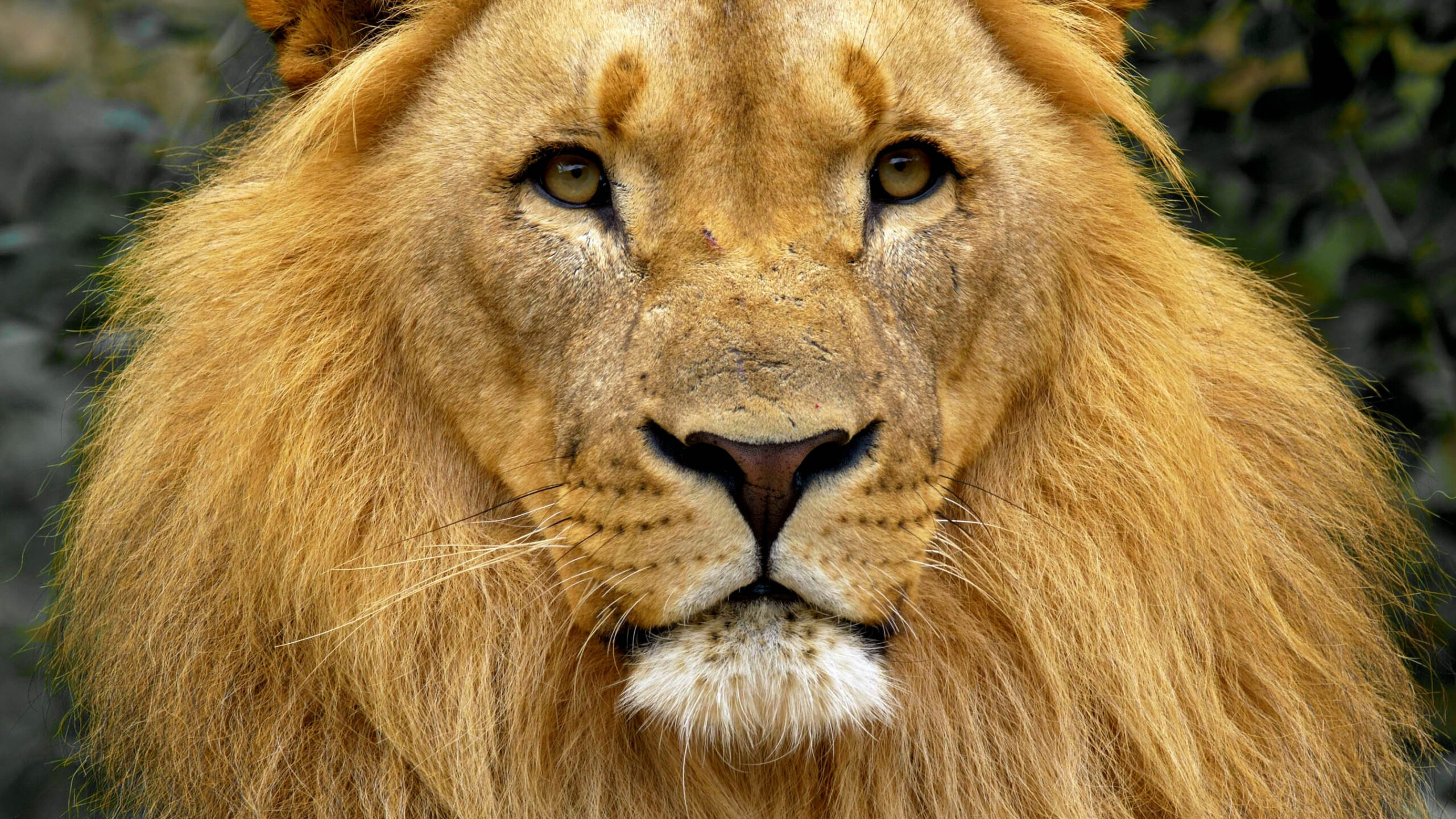

Photo courtesy of Curiosity Stream
If people want to travel and encounter great animals, especially those one expects on a safari like elephants or lions, what are some guidelines they should follow to do so ethically?
Anytime there’s a big cat and a moment where you can sit next to it, that cat’s been drugged. It’s the only way for you to be able sit next to a tiger, because all tigers are wild, none are habituated or tame, that means they’re usually drugged with the horse tranquilizer ketamine and are kept in a perpetual state of spaced out. Anywhere that promotes selfies with animals you need to think about. For that one moment you’re having that picture, what’s a lifetime of that animal suffering worth? And often tigers are bred nastily with each other and the cubs will die very early on and sometimes are chucked in freezers. Tigers that are no longer wanted are chopped up and sold as parts to the traditional medicine trades. So animal tourism has a real dark side. And absolutely never go to a place that allows you to ride elephants. The places where you go and respect the animals, and not interact too much and allow them to be in the wild or semi-wild enclosures, those are much better, and there are some really good ones developing around Thailand, especially. But a really big thing about adventure and wildlife tourism, definitely consider spending your money in an indigenous operated place so that money is protecting the area.
Can you give an example?
In Guyana there’s a village, the Rewa community, and they only take a few hundred people per year as a tourism offering and most come from the international market. There was an incredible journalist who wrote an article doing a cost benefit analysis of the amount of carbon put into the atmosphere from all the flights of the 400 people coming into the Rewa each year, and they looked at how much was stored in the trees. Because they make all their money on tourism and don’t have any gold or logging concessions, it means if they can keep making this money, they are keeping that forested area with its animals and trees alive. [The trees] actually save and sequester that carbon, so by visiting that community they were offsetting their flights. There are definitely ways to travel ethically, and sometimes you’re actually saving the environment.
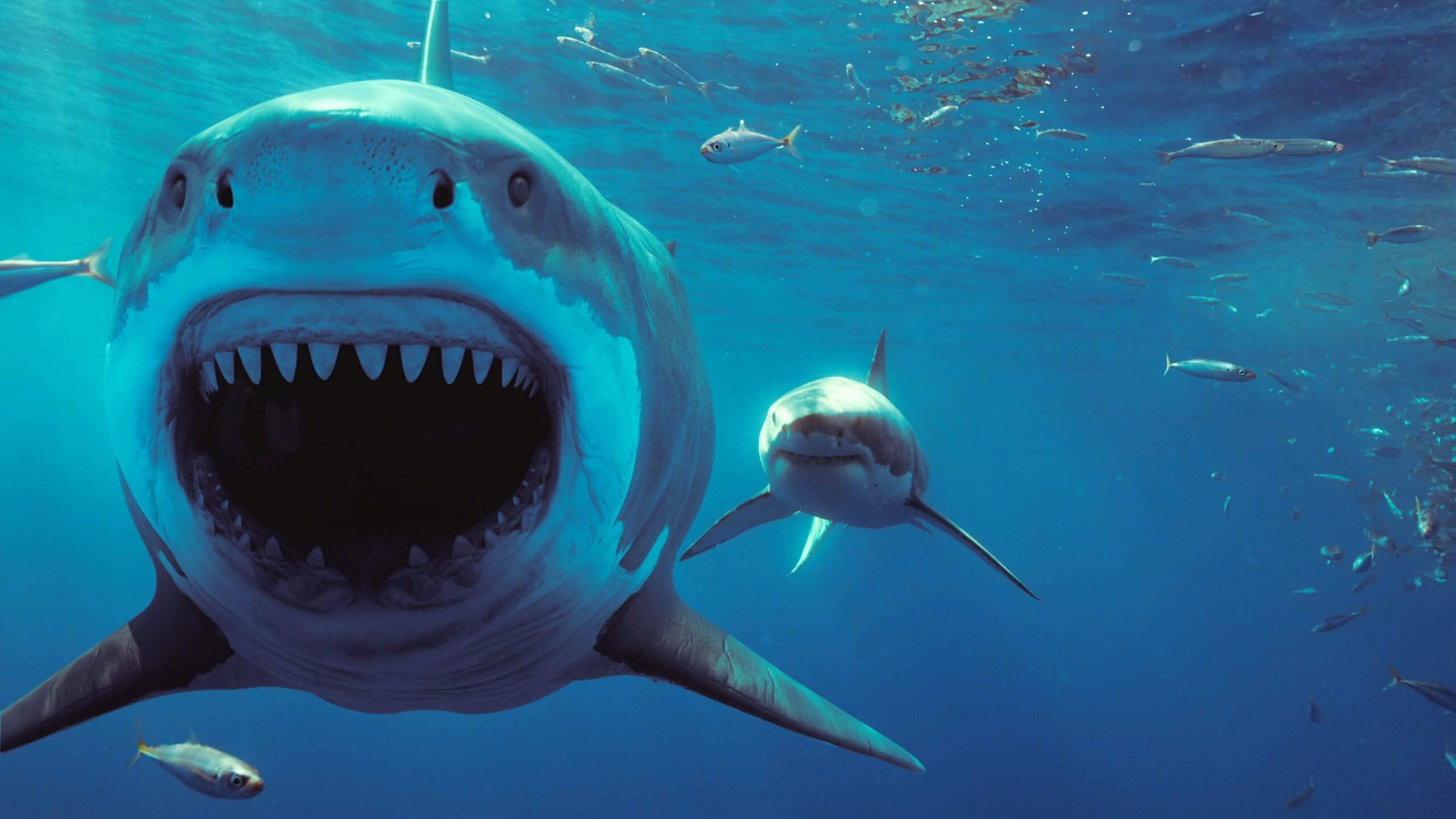

Great White Shark (Photo: Curiosity Stream)
How do you feel about great white shark cage experiences off South Africa??
Actually, I heard all the great white sharks off South Africa are gone now because the killer whales have been eating and scaring them off. Fish regulate their buoyancy with a swim bladder, but sharks don’t have that, so they do it with fats and a shark’s liver can be a third the size of their body because its so fatty. Killer whales want to eat that fatty reserve, and will hunt sharks to get it! They will grab a shark’s two pectoral fins and tear them apart to get the liver and killer whales have been doing that off the coast of South Africa.
Should gay people be wary about going to virulently antigay regions?
Yes. I don’t think we should pretend otherwise. Like in 36 percent of the world it’s illegal to be gay, and I think 11 or 12 countries carry the death penalty. We should talk about the fact its pretty fucked up that parts of the world are off limits to us, and there’s a lot we have yet to do to make it better. But some of the countries only have those laws because of British colonial law, and we have to talk about that history as well. Those countries aren’t particularly homophobic in some cases, like Guyana. So don’t just look at the law and consider it a stopper, because it’s although its legal to be gay in Russia, it’s a less safe place than Guyana.
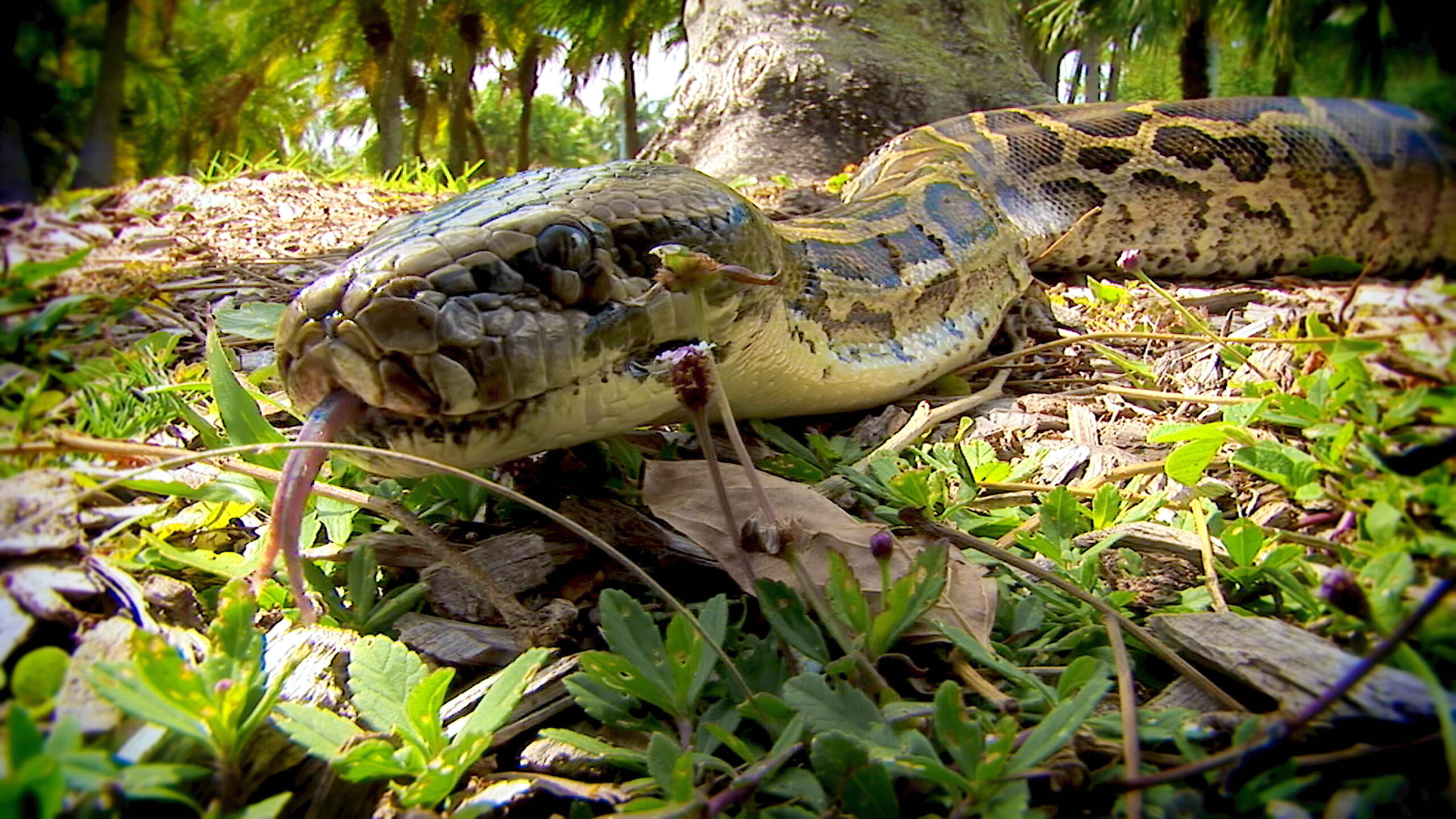

Anaconda (Photo: Curiosity Stream)
Back to the gnarly wildlife stuff! What’s the creepiest thing you’ve been bitten by so far?
I was lecturing and leading a study in Mexico, right in the center of the jungle [near some] Mayan ruins, where you’re never supposed to take off and leave your shoes unattended, and if you do, shake them out before putting them on again. So I slid my feet into my boot, and this extremely pathetic scream came out of me. I had been stung by a particularly nasty little scorpion. Horrible! But the worst one, have you heard of the bullet ant? On the Schmidt pain index of bites and stings it’s the worst in the world and likened to being shot by a gun many, many times in the same location. I was in the Amazon about 250 miles in, no way out, and woke up in my hammock which was tied between two trees during the night to this little sound. I knew immediately what it was. A whole trail of bullet ants was inside my hammock lining, and I was dead still and had the most horrible time sliding out of my hammock and crawling to the ground making as little movement as possible. None of them got me, but had they all stung me at the same time god knows how bad it would have been because some people said the pain is so bad you have to hold someone down so they don’t try to hurt themselves.
If Giants is a big success, would you like to do a companion series on tiny little critters too?
The giants of the mini-world! I’d love to! When you go into that world they have their giants, too, and I love macro photography.
And are there any animals you find boring or even despise?
I was going to say pigeons, but actually pigeons are really fucking cool. You can throw a pigeon somewhere and it can orient itself through the earth’s magnetic field. A boring animal? Mosquitoes. They can fuck right off. They probably feed huge numbers of animals and may be critically important, but I hate them.
You May Also Enjoy
Adventure: Exploring Alaska


